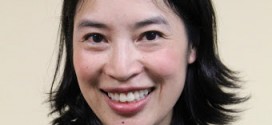
As the Back-to-School Tax Free Weeks in Virginia and Maryland sailed by, it is once again time for kids aged 6-17 to put away the bathing suit and hit up the books. This school year will be an especially distressing one for rising juniors and their families, who are facing one of the most transformative events in their lives: applying for college.
Often deemed the “model minority,” Asian Americans are known for their high achievements in academics. The data collected by the US Census Bureau indicate that over half of the Asian American population over the age 25 have completed a degree in higher education, the highest proportion of any race or ethnic group in the United States; among them, 21.2% hold an advanced degree, i.e. Master’s, Ph.D., M.D. or J.D.
With great expectations comes greater anxiety. It has long been speculated that there exists a certain quota among the nation’s most elite institutions. Many Asian American students fear that they are being compared against one another over an elevated standard in order to keep the campus demographically balanced, while other ethnicities may be admitted with lesser credentials. In other words, a program implemented to level the playground for all may have in fact hindered upward mobility for some.
Khin Mai Aung, the Educational Equity Program Director at Asian American Legal Defense and Education Fund, told Asian Fortune, “Quotas in educational admissions are illegal and have been illegal since 1978 under United States Supreme Court law.” But the statistics lend themselves to unfavorable insinuations in the eyes of concerned applicants and their parents.
For instance, although the mean SAT score of Asian Americans is now 63 points higher than that of their white peers, all of the Ivy League schools comprise of mostly white students. Ron Unz at the New York Times also points out that “the percentage of Asian-Americans enrolled at Harvard fell by more than 50 percent over the last two decades, while the percentage of whites changed little.” A similar pattern can be found at most Ivy League schools, whereas the California Institute of Technology, famous for its race-neutral admissions policy, saw an almost uniform in growth across races.
One factor at play might be how the students play, or the lack thereof. America’s top colleges often boast of both academic performance and athletic prowess. While merit scholarships might be taxing on the school’s end, sports are guaranteed financially rewarding, hence the higher incentive for team recruitment.
 A senior admissions officer at an Ivy League school told Time Magazine, “I have to turn down hundreds of highly qualified applicants, including many truly talented amateur athletes, because we must take so many recruited athletes who are narrowly focused and less accomplished otherwise.” Perhaps the emphasis on competitive sports, some may claim, is but one vestige of the Old Boys’ Club exclusivity.
A senior admissions officer at an Ivy League school told Time Magazine, “I have to turn down hundreds of highly qualified applicants, including many truly talented amateur athletes, because we must take so many recruited athletes who are narrowly focused and less accomplished otherwise.” Perhaps the emphasis on competitive sports, some may claim, is but one vestige of the Old Boys’ Club exclusivity.
Outperforming but underrepresented – this is somehow reminiscent of the situation Jewish Americans found themselves in prior to World War II. Daniel Golden, author of “The Price of Admission,” ventures to suggest that Asian Americans are “the new Jews because some rules of college admissions, like geographic diversity, were originally aimed at preventing the number of Jews from growing too high.” Finally able to pursue a college education on the G.I. bill and thereby anointed into the upper middle class that had shunned them before, Jewish veterans are clearly the beneficiary of mid-century civil rights movements that sowed the seed for Affirmative Action.
American Civil Liberties Union states that affirmative action was instituted to “secure racial diversity in educational settings… to remedy continuing systemic discrimination against people of color, and to help ensure equal opportunities for all people.” But as one student interviewed by the New York Times said, “Maybe affirmative action was necessary at one point in time, but it is outdated today and we need a new formula.”
To say the least, the method categorization employed back then clearly discounted the vast diversity of Americans of Asian descent. What exactly constitutes “Asian American” is a notion relative to the West, for Asia consists of cultures, languages, religions, and ethnicities that are too variegated to coagulate into one entity. Thus many Americans of (partial) Asian heritage hesitate to define themselves with a pan-Asian identity that, in the media as well as popular conception, is typically dominated by East Asians and “Indians,” which is problematically nebulous in and of it self.
Today’s landscape is, albeit not a rainbow-land just yet, not a far cry from it, either. The US Education Department predicts that this fall marks the first school year where students of minority descents will constitute the majority of overall enrollment in the public education system, and the trend would continue thereafter. Which is to say, racial politics will no longer be the trials and tribulations for a small sector of the society, but an increasingly pressing concern shared by all Americans alike.
 Asian Fortune Your source for all things Asian American
Asian Fortune Your source for all things Asian American


